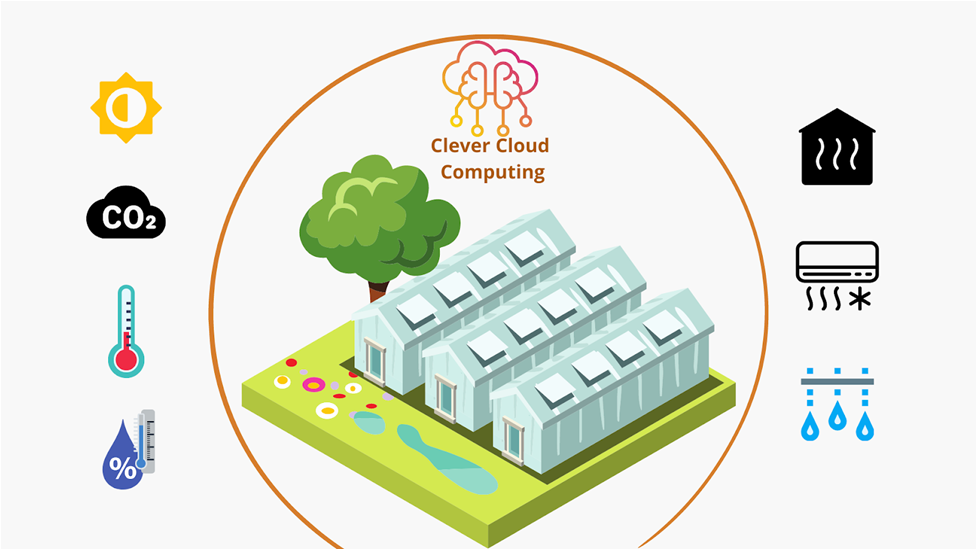Agricultural productivity globally and in Australia has been reducing due to climate change, the constraints of land, natural resources (e.g., electricity and water) as well as imperatives to reduce greenhouse gas emissions. Furthermore, the demand for food production might be doubled by 2050 in order to feed estimately 9 to 10 billion people [1] while also 10% of the worldwide population have been living in poor condition and insufficient food supply [2]. In order word, the agricultural industry faces many challenges to maintain the food quality and volume for eight billion people. First, climate change has led to a negative impact on food-supply and brought unexpected pests and diseases. Second, human resources working in the agricultural industry are dropping at an alarming rate, especially during Covid travel restriction. Third, food waste between harvest and retail due to inappropriate storage conditions and long-distance transportation. Those challenges lead to emerging opportunities to transform the nature of Australian agriculture, specifically agritech.
Mushroom industry is one of the most sustainably produced foods since it provides a nutritious and smart food source with a very small environmental footprint for a growing world population. Moreover, mushrooms are a good source of minerals, vitamins and antioxidants [3, 4] and have various medicinal properties [5]. Mushrooms have a rapid growth cycle which is potentially solving a food shortage problem of such a significant population expansion. Unfortunately, the Australian mushroom industry has been under a lot of pressure due to the shortage of labor resources and the high operational costs. According to [6], more than 82 percent of fresh mushrooms imported from South Korea while other biggest mushroom farms in NSW have a dependency on mushroom compost from China for a long time.
Unlike other crops, mushrooms typically are grown indoors and are not impacted by seasonal issues. However, the electricity costs and labour costs have continuously increased in recent years. As a highly labour intensive industry, the mushroom businesses rely on thousands of workers, particularly the picking costs are about 40% of total costs [7]. Besides this, mushroom farmers often grow mushrooms based on their experiences, e.g,. measuring compost moisture by using their fingers to feel the moisture level; therefore, it causes less optimal mushroom production. Furthermore, the mushrooms require the right temperature and humidity such as 22-28 Celsius degrees and 80-90% for oyster mushrooms in order to produce superior mushrooms. Other environmental elements might also impact on the mushrooms’ healthiness such as light and carbon-dioxide level. With our smart mushroom greenhouse, it will effectively shorten cropping cycles while also double production. Beyond that, our smart mushroom greenhouse provides the automation system to maintain the optimal environment for the better mushrooms yield, while also optimising the use of natural resources such as electricity and water.
Our smart greenhouse system comprises three key technologies that differentiate our products from others, namely (i) AI for yield optimisation, mould and disease detection and inventory prediction; (ii) network of sensors and cameras for data collection; and (iii) automated irrigation, climate control and harvesting systems. Digitisation allows all mushroom growers access and have the full control of their smart greenhouses everywhere and anytime via our mobile application. Our smart greenhouse allows us to save over 80% FTE (full-time equivalent), increases yield by over 50% and reduces contamination to below 0.1%.
Acknowledgement
The development of our AI-integrated smart mushroom greenhouse has been supported by the NSW Government.
References
- Food and Agriculture Organization of the United Nations. http://www.fao.org
- World Population. http://www.worldometers.info/
- Liu J, Jiya L, Kan J, Jin C (2013) In vitro and in vivo antioxidant activity of ethanolic extract of white button mushroom (Agaricus bisporus). Food Chem Toxicol 51:310–316. https://doi.org/10.1016/j.fct.2012.10.014
- Matilla P, Konko K, Eurola M, Pihlava JM, Astola J, Vahteristo L, Hietaniemi V, Kumpulainen J, Valtonen M, Piironen V (2001) Contents of vitamins, mineral elements, and some phenolic compounds in cultivated mushrooms. J Agric Food Chem 49:2343–2348. https://doi.org/10.1021/jf001525d
- Jagadish LK, Krishnan VV, Shenbhagaraman R, Kaviyarasan V (2009) Comparative study on the antioxidant, anticancer and antimicrobial property of Agaricus bisporus (J. E. Lange) Imbach before and after boiling. Afr J Biotechnol 8(4):654–661
- https://thefarmermagazine.com.au/the-mushroom-industry-in-nsw-continues-to-grow/
- https://www.freshplaza.com/article/9033276/automation-offers-a-future-for-mushroom-production/
